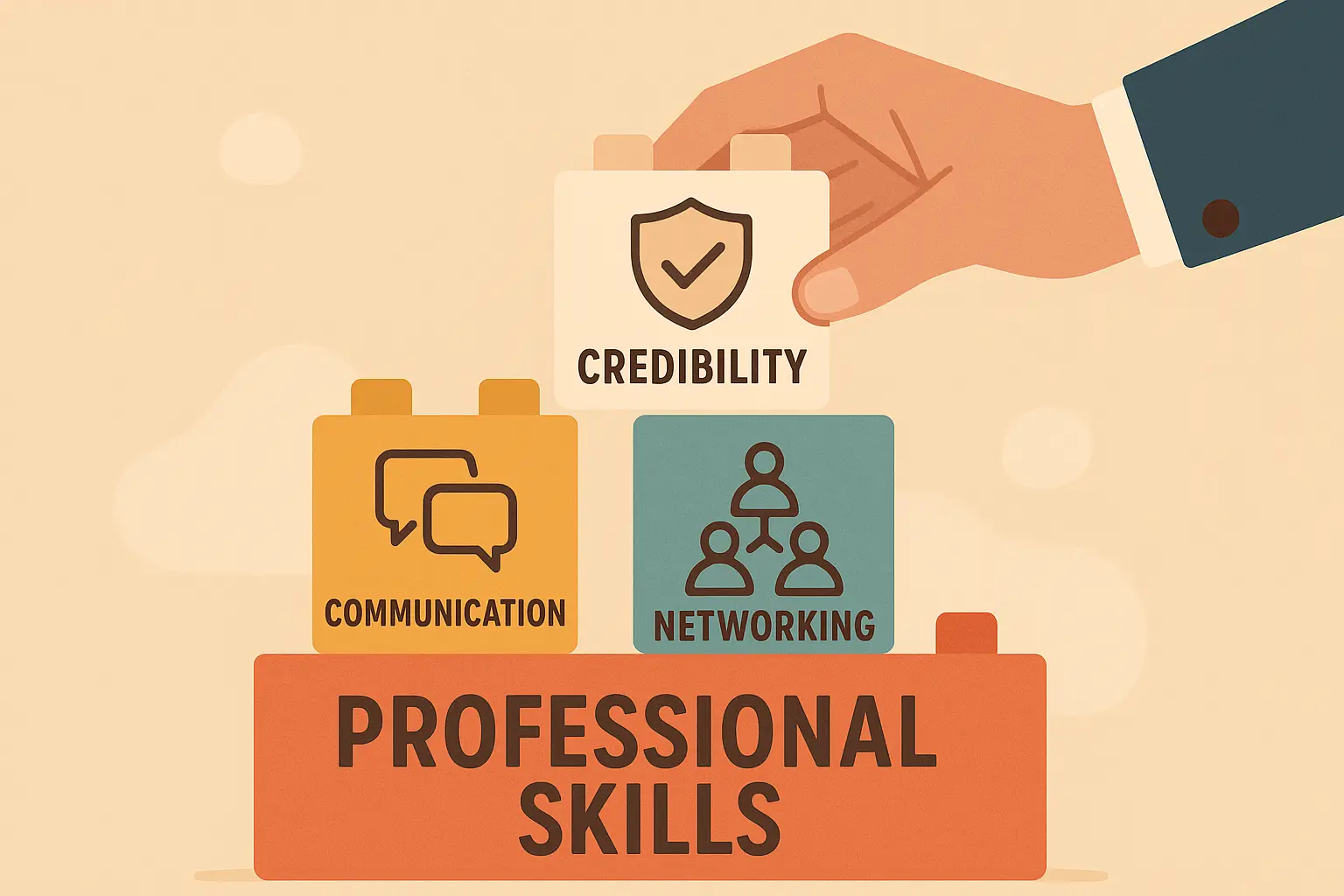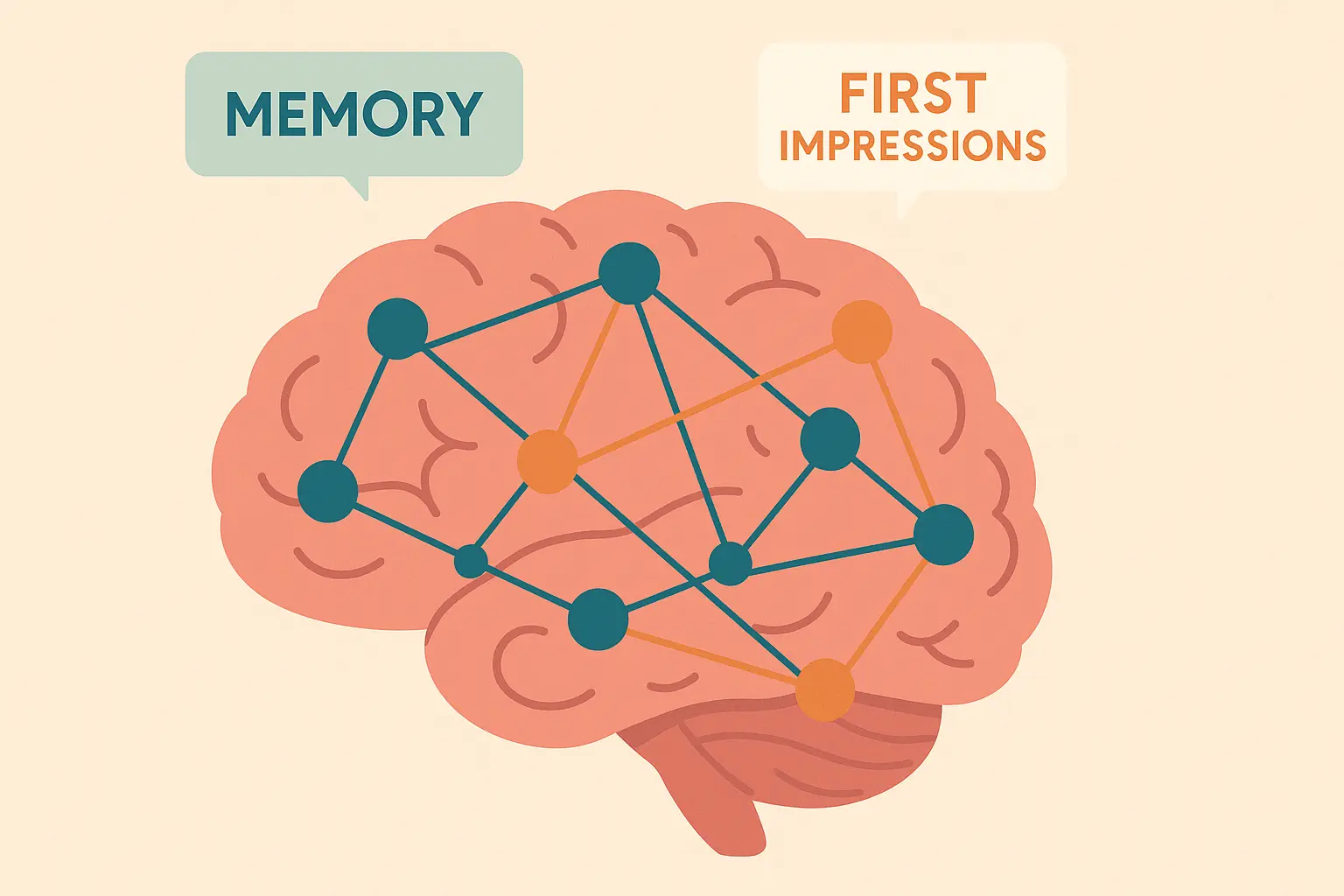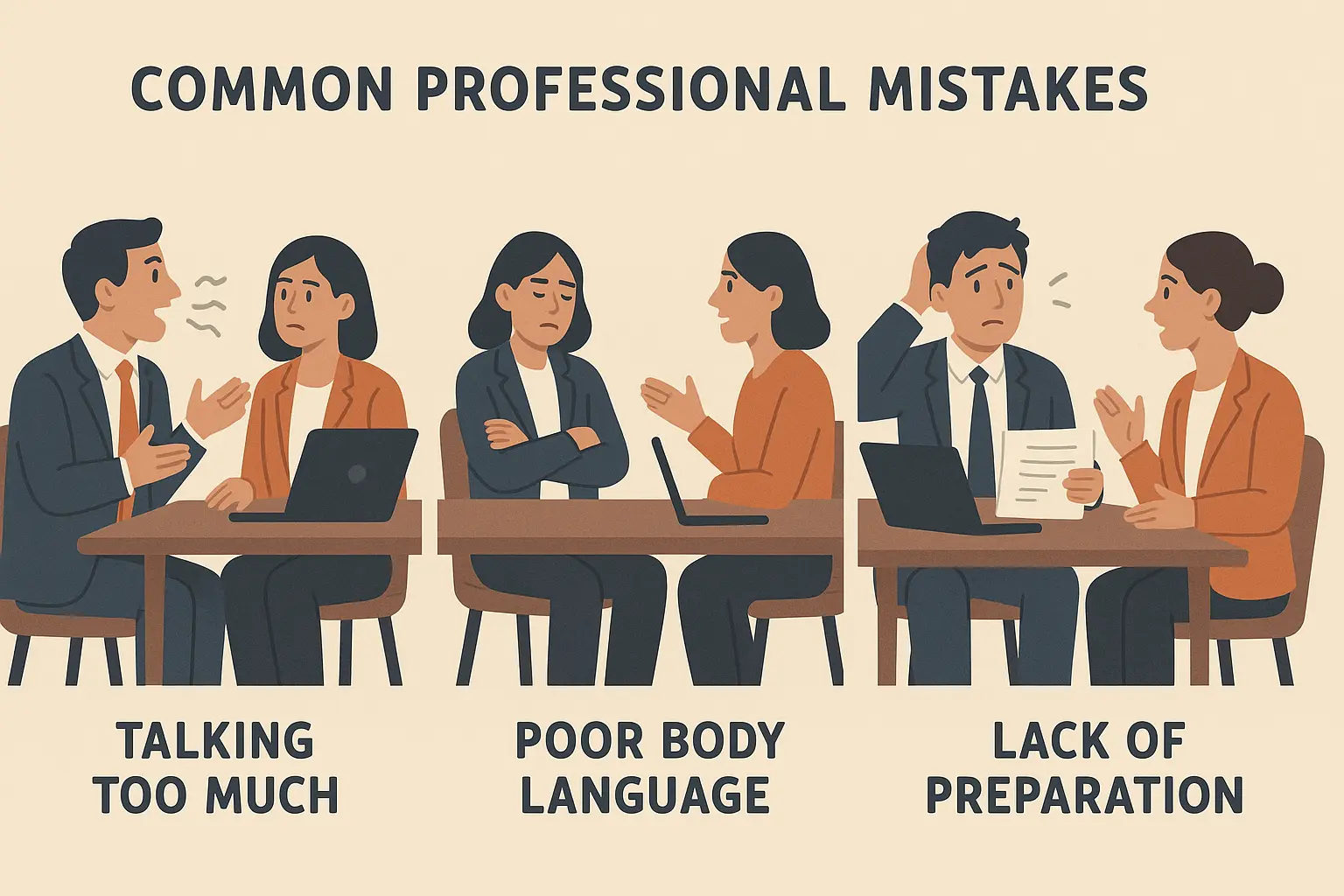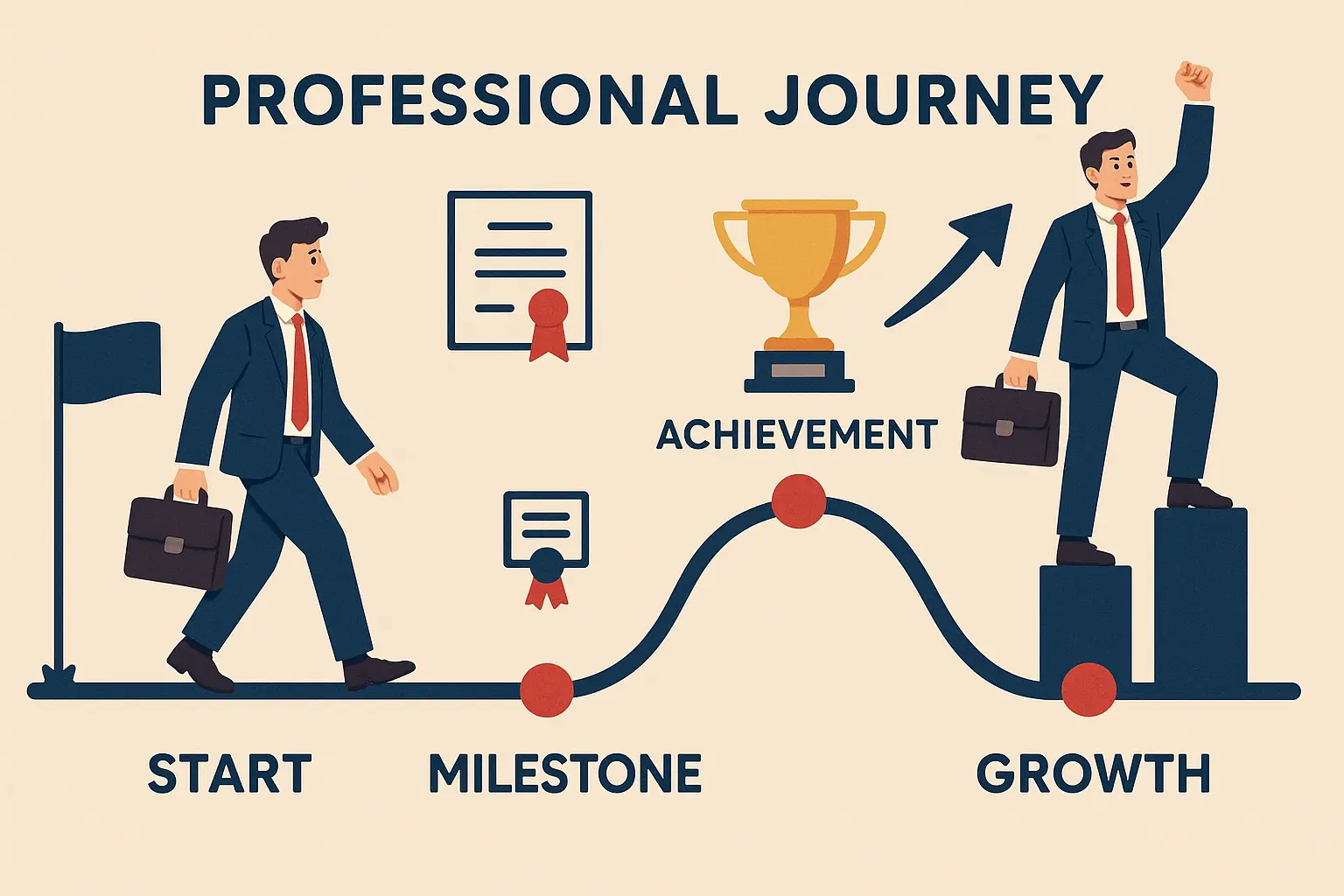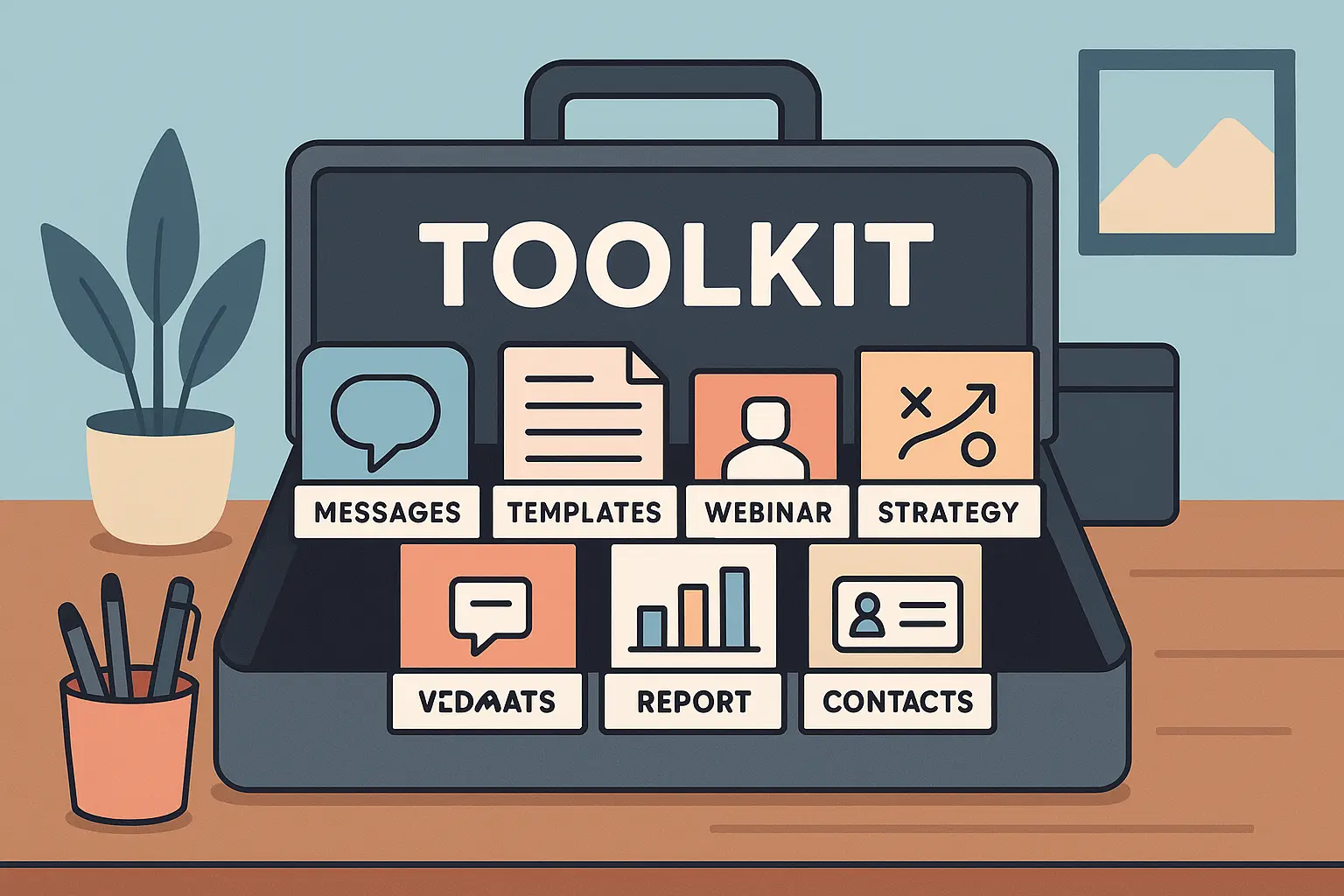How to Introduce Yourself Professionally: The Real-World Guide That Actually Works

You know that moment when someone asks you to introduce yourself and your mind goes completely blank? Yeah, me too. Most networking advice sounds brilliant until you’re actually standing there, palms sweaty, wondering if you should mention that weird job from three years ago or just stick to your current role.
After enough of these moments (and some truly painful ones), I’ve cracked the code on what actually works. Research shows that it takes us a mere tenth of a second to form a judgment about someone, making those opening moments absolutely critical to your professional success. Whether you’re networking, interviewing, or just trying to make better professional connections, this guide gives you practical techniques that work in real situations.
Table of Contents
-
Why Some Introductions Work and Others Don’t
-
Common Mistakes That Kill Your First Impression
-
Adapting Your Introduction to Any Situation
-
Going Beyond Basic: Advanced Techniques
-
Your Professional Introduction Toolkit
Why Some Introductions Work and Others Don’t
Professional introductions aren’t about rattling off your resume or hoping people remember your name. They’re about creating a moment that establishes credibility, shows relevance, and opens doors for meaningful conversations. The difference between introductions that stick and those that don’t comes down to understanding how people actually process new information about strangers.
Want to know why some people instantly grab your attention while others fade into background noise? It’s not magic—it’s psychology. And once you get how your brain actually processes new people, everything clicks.
Building Your Professional Identity Framework
Your professional identity serves as the anchor for every introduction you’ll ever make. This isn’t about creating a fake persona—it’s about clarifying and articulating your authentic professional self. Most people stumble through introductions because they haven’t done this foundational work.
Here’s what actually matters when introducing yourself:
-
Your current role (but make it interesting)
-
What makes you different (not just another marketing manager)
-
Why you’re talking to them specifically
When you introduce yourself professionally, you’re combining your current role, expertise, and unique value into a cohesive story that immediately establishes who you are and why you matter. Just as crafting an effective introduction requires understanding your professional identity, creating a professional resume format demands the same level of strategic thinking about how you present your credentials and value proposition.
The secret is having these components ready so you can mix and match them based on your audience. Introducing yourself at a tech conference means emphasizing different aspects than when introducing yourself at a general business networking event.
The 7-Second Window That Changes Everything
Research consistently shows that people form lasting impressions within the first 7 seconds of meeting someone. According to research conducted by Vanessa Van Edwards, a behavioral investigator, we need approximately 7 seconds to make up our minds about something, while other studies on facial first impressions show it takes us a mere tenth of a second to form a judgment about someone. Source: Pumble Blog
This timeline means you need to frontload the most important information and avoid cognitive overload. Those first few words carry disproportionate weight. I’ve watched people lose their audience in the first sentence by starting with irrelevant details or speaking too quietly to be heard clearly.
Your brain processes multiple streams of information simultaneously during introductions. Vocal tone, body language, word choice, and contextual relevance all contribute to that snap judgment. Understanding this process means you can work with it rather than against it.
Context Drives Everything
The same introduction that works at a casual networking mixer will fall flat in a formal board meeting. Understanding how to read your audience and adjust your tone, length, and emphasis while keeping your core message intact separates amateur introductions from professional ones.
As highlighted in a recent Harvard Business Review article, “A Simple Way to Introduce Yourself”, the challenge of professional introductions has become even more complex in our hybrid work environment. The meeting leader asks everyone to briefly introduce themselves, and suddenly your brain goes into hyperdrive wondering what to say about yourself in this new digital-first professional landscape.
Consider this effective approach in action: “Hi, I’m Sarah Chen, Head of Product Development at CloudTech Solutions. I lead the team that built the platform now used by over 50,000 businesses to streamline their operations. What’s particularly exciting is that we’ve just launched an AI integration that’s reducing processing time by 60%. I’m here today because I’m passionate about connecting with other leaders who are navigating the intersection of technology and business efficiency.”
Notice how Sarah leads with her title and company, immediately follows with quantifiable impact, adds a current development that shows momentum, and ends with why she’s there. This gives people multiple entry points to connect with your story.
Authority Markers That Signal Credibility
Certain words, phrases, and structural elements immediately signal competence and trustworthiness. Industry terminology, quantifiable achievements, and recognized affiliations act as shortcuts that help people quickly categorize you as credible and worth their attention.
The same principles that make introductions credible apply when you’re learning how to ask for a raise strategically – both situations require you to establish authority and demonstrate measurable value.
Authority markers work because they tap into existing mental frameworks people use to evaluate expertise. When introducing yourself with specific numbers, recognized company names, or industry-specific terminology, you’re borrowing credibility from established sources.
Common Mistakes That Kill Your First Impression
Last week at a conference, I watched someone introduce themselves by saying, “I’m just a project manager.” Just? That word killed any interest before they even got started. Even well-intentioned professionals make introduction mistakes that undermine their credibility.
The biggest mistake people make is trying to cram their entire resume into a 30-second introduction. This overwhelms listeners and dilutes your key messages. Focus on 2-3 core points that align with what your audience actually cares about. Your introduction should create interest, not provide a comprehensive biography.
Information Overload: When More Isn’t Better
Resist the urge to mention every job you’ve ever had or every skill you’ve developed. Practice your introduction until you can deliver your key points clearly within your time limit. If someone wants more details, they’ll ask follow-up questions.
What to Avoid:
-
Rambling beyond 2 minutes
-
Listing every job you’ve ever had
-
Including irrelevant personal details
-
Using industry jargon without explanation
-
Making negative comments about previous employers
-
Checking your phone during introductions
-
Self-deprecating humor in professional settings
The Authenticity vs. Polish Balance
There’s a fine line between being professionally polished and sounding robotic. Your introduction needs to feel natural and genuine while still maintaining professional standards. Practice enough that your delivery feels conversational, not rehearsed.
An estimated 70% of communication is nonverbal, making your delivery just as crucial as the words you choose. Source: BetterUp This statistic reinforces why how you introduce yourself matters as much as what you say.
The best introductions sound prepared but not scripted. You want people to feel like you’re having a conversation with them, not delivering a presentation. Practice your introduction enough that the structure becomes automatic, but leave room for natural variation.
Adapting Your Introduction to Any Situation
Digital communication has fundamentally changed how we introduce ourselves professionally. Without traditional body language and vocal cues, you need different strategies for email, video calls, and social media platforms. Each channel has its own rules and opportunities.
The challenge with digital introductions is that you’re competing with countless other messages, notifications, and distractions. Your introduction needs to cut through the noise and create immediate value for the recipient.
Email Introductions That Actually Get Read
Email introductions are brutal. You’ve got maybe three seconds before someone hits delete. According to statistics by Radicati, on average, a business professional sends and receives 127 emails per day. Source: Hiration This volume means your email introduction needs to provide immediate value and clear purpose to stand out.
The strategic approach to email introductions mirrors the principles behind writing a cover letter that gets noticed – both require immediate value demonstration and clear, compelling messaging.
Email Introduction Formula:
Subject: [Specific Value/Connection] - [Your Name] from [Company]
Dear [Name],
[Immediate context/connection reference]
[One key credential that's relevant to them]
[Clear, specific ask or value proposition]
[Call to action with next steps]
Best regards,
[Your name and contact information]
Here’s this formula in action: “Subject: LinkedIn connection interested in your AI automation insights – Maria Rodriguez from DataFlow Solutions. Hi James, I saw your recent presentation on AI automation at the TechForward conference and was impressed by your approach to reducing manual processes. As someone who’s helped 15+ companies implement similar solutions with 40% efficiency gains, I’d love to share some insights that might complement your work. Would you be open to a brief 15-minute call next week to discuss potential collaboration opportunities? Best regards, Maria”
Video Call Presence That Commands Attention
Video calls are weird because you’re performing for a camera, not talking to humans. Your gestures need more energy, your voice needs more punch, and you have to stare at that little dot instead of the faces on screen. Feels unnatural because it is.
Video introductions combine verbal content with visual presentation. Your camera positioning, lighting, background, and energy level all contribute to the impression you make. Technical preparation is just as important as content preparation.
Video Call Essentials:
-
Test camera angle (eye level or slightly above)
-
Check lighting (face well-lit from front)
-
Ensure stable internet connection
-
Choose professional background
-
Practice maintaining eye contact with camera
-
Prepare 30-second, 1-minute, and 2-minute versions
Practice looking directly at your camera when making key points, and remember that your upper body language is more visible than usual.
In-Person Networking: Reading the Room
Face-to-face introductions allow you to leverage body language, vocal variety, and real-time feedback in ways that digital communication can’t match. However, they also require you to read social cues and adapt on the fly based on the situation and audience response.
The advantage of face-to-face interactions is immediate feedback. You can see when someone’s eyes light up with interest or when they start looking around the room. This real-time information helps you pivot your approach mid-conversation.
Different networking contexts require different approaches:
Large Conference: 15-30 seconds, confident and clear tone, focus on name, company, and one key differentiator
Small Industry Meetup: 30-60 seconds, conversational and detailed, emphasize relevant experience
Executive Boardroom: 45-90 seconds, formal and authoritative, highlight strategic value
Casual Coffee Chat: 60-120 seconds, relaxed and personal, include common interests
Just as networking requires adapting your approach to different situations, professionals must understand how to follow up after an interview with the same level of strategic communication and timing.
Volume and energy matter more at large events where you’re competing with ambient noise and distractions. At smaller gatherings, you can afford to be more nuanced and detailed.
Interview and Meeting Protocols
Formal business settings have their own rules and expectations. Your introduction needs to demonstrate professionalism while creating rapport, balancing confidence with humility and relevance with personality.
Start with gratitude for the opportunity, state your name and current role clearly, then transition into why you’re excited about the specific opportunity or challenge at hand. Avoid generic enthusiasm—be specific about what interests you.
Interview introductions should connect your background to the role you’re pursuing. Instead of reciting your resume, focus on the experiences that directly relate to their needs.
Going Beyond Basic: Advanced Techniques
Once you’ve got the basics down, here are three ways to level up: tell a story instead of listing credentials, connect to what’s happening in your industry right now, and always lead with what you can do for them, not what you need.
The Challenge-Solution-Impact Framework
Here’s how this sounds in real life. Instead of “I’m a VP of Operations,” try “I’m the guy who figured out why our factory was bleeding $2 million a year.” See the difference? One makes people lean in, the other makes them check their phone.
Structure your introduction around a specific challenge you’ve addressed, the solution you provided, and the measurable impact you created. This narrative approach makes your value proposition concrete and relatable.
Here’s the framework in practice: “Hi, I’m David Kim, VP of Operations at GreenTech Industries. Last year, our manufacturing division was losing $2M annually due to equipment downtime—a challenge many in our industry face. I led the implementation of a predictive maintenance system using IoT sensors and machine learning algorithms. The result? We’ve reduced unplanned downtime by 75% and saved $1.8M in the first year alone. I’m excited to be here today because I know many of you are tackling similar operational efficiency challenges.”
This framework works because it follows the natural progression of how we process problems and solutions. People connect with challenges they recognize, the solution shows your expertise, and the impact proves your effectiveness.
Personal Brand Storytelling
Your unique professional journey can become a compelling narrative that differentiates you from others with similar credentials. Focus on pivotal moments and defining experiences that shaped your expertise and approach.
The storytelling principles that make introductions memorable are the same ones that help you craft compelling resume summary examples that capture attention and differentiate you from other candidates.
Personal brand stories work best when they reveal something unexpected about your background or approach. Maybe you started in a completely different field, overcame a significant challenge, or discovered your passion through an unusual experience. Share the turning point that led you to your current expertise.
Industry Relevance Integration
Connect your background to current industry trends, challenges, or opportunities. This demonstrates strategic thinking about where your field is heading and positions you as someone who understands the bigger picture.
Industry relevance shows that you’re thinking beyond your immediate role. When introducing yourself with awareness of broader trends, you signal that you’re a strategic thinker who can contribute to high-level discussions.
Stay current with industry publications, attend relevant conferences, and engage with thought leaders in your space. This knowledge becomes valuable context for your introductions.
Value-First Approaches That Create Reciprocity
Leading with how you can help others rather than what you need creates psychological reciprocity. People are more inclined to assist you or continue the conversation when you’ve already demonstrated value or offered assistance.
Value-first introductions shift the dynamic from “what can you do for me” to “what can I do for you.” This approach immediately differentiates you from people who are obviously networking for their own benefit.
Mention resources you can share, connections you can make, or insights you can provide. This positions you as a giver rather than a taker from the very first interaction.
The challenge of professional introductions has evolved significantly in recent years. As noted in career development resources, professionals now struggle with questions when interviewers specifically mention they already have your résumé, requiring a more nuanced approach to self-presentation. “Answering Tell Me About Yourself” The Cut
Your Professional Introduction Toolkit
Mastering professional introductions is the beginning of your career advancement journey. The same strategic thinking that goes into crafting an impactful introduction applies to other professional communication, including resume creation. When you understand audience analysis, personal branding, and strategic messaging, you can apply these skills across all your career development efforts.
Your introduction skills directly enhance your resume writing process. The ability to customize your message for different audiences mirrors how you should tailor your resume for specific opportunities while maintaining consistency in your professional narrative.
Resume Builder IQ understands this connection between verbal and written professional communication. Their AI-powered platform helps you translate the confidence and clarity of your verbal introduction into a written format that passes ATS systems and impresses hiring managers. The same principles of strategic information hierarchy and audience-focused messaging that make introductions successful apply to creating compelling resumes.
Ready to take your professional communication to the next level? Try Resume Builder IQ’s free resume builder and see how the skills you’ve developed in crafting introductions can transform your written professional materials too.
The techniques we’ve covered work because they’re based on how people actually think and make decisions. Your self-introduction becomes more effective when you understand the psychology behind first impressions and adapt your approach accordingly.
Start with the basics: know your professional identity, understand your audience, and practice until your delivery feels natural. Then layer in the advanced techniques as you get more comfortable. Remember, every professional you admire started with awkward introductions too.
Practice Makes Progress, Not Perfect
Start practicing with low-stakes situations. Coffee shops, grocery stores, anywhere you can try out your introduction without career consequences. Because when the big moment comes, you’ll be ready.
The goal isn’t to become a networking robot who delivers flawless pitches. It’s to become someone who can authentically and effectively communicate their value in any professional situation. That’s a skill that will serve you throughout your entire career.
Modern elevator pitches work best when they’re conversational rather than presentational. Think of it as starting a dialogue, not delivering a monologue. End with a question or observation that invites response rather than awkward silence.
Practice your elevator pitch until the structure becomes second nature, but avoid memorizing it word-for-word. You want flexibility to adapt based on who you’re speaking with and what’s happening in the moment.
Final Thoughts
Look, perfect introductions don’t exist. But memorable ones do. And memorable beats perfect every single time. The goal isn’t to sound like everyone else, just more polished. It’s to sound like you—the professional version who knows their worth and can communicate it clearly.
Professional introductions aren’t about perfection—they’re about connection. The techniques in this guide work because they’re based on how people actually think and make decisions, rather than some idealized version of professional interaction.
When you introduce yourself with confidence, relevance, and genuine interest in others, you create opportunities that extend far beyond that initial conversation. Master these fundamentals, and you’ll find that professional relationships become easier to build and maintain.
The bottom line? Good introductions aren’t about being perfect—they’re about being memorable for the right reasons.


